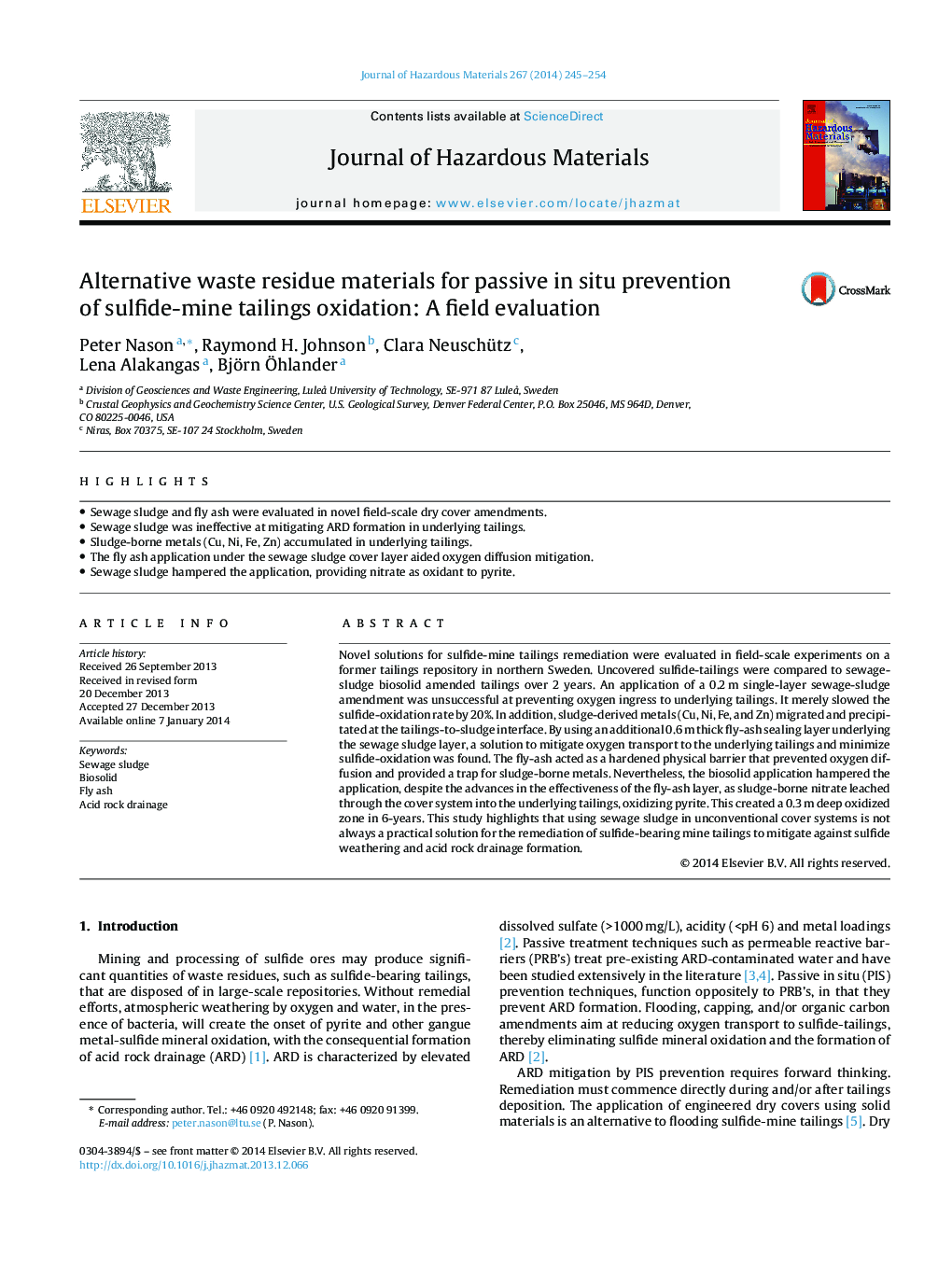| Article ID | Journal | Published Year | Pages | File Type |
|---|---|---|---|---|
| 576926 | Journal of Hazardous Materials | 2014 | 10 Pages |
Abstract
Novel solutions for sulfide-mine tailings remediation were evaluated in field-scale experiments on a former tailings repository in northern Sweden. Uncovered sulfide-tailings were compared to sewage-sludge biosolid amended tailings over 2 years. An application of a 0.2Â m single-layer sewage-sludge amendment was unsuccessful at preventing oxygen ingress to underlying tailings. It merely slowed the sulfide-oxidation rate by 20%. In addition, sludge-derived metals (Cu, Ni, Fe, and Zn) migrated and precipitated at the tailings-to-sludge interface. By using an additional 0.6Â m thick fly-ash sealing layer underlying the sewage sludge layer, a solution to mitigate oxygen transport to the underlying tailings and minimize sulfide-oxidation was found. The fly-ash acted as a hardened physical barrier that prevented oxygen diffusion and provided a trap for sludge-borne metals. Nevertheless, the biosolid application hampered the application, despite the advances in the effectiveness of the fly-ash layer, as sludge-borne nitrate leached through the cover system into the underlying tailings, oxidizing pyrite. This created a 0.3Â m deep oxidized zone in 6-years. This study highlights that using sewage sludge in unconventional cover systems is not always a practical solution for the remediation of sulfide-bearing mine tailings to mitigate against sulfide weathering and acid rock drainage formation.
Related Topics
Physical Sciences and Engineering
Chemical Engineering
Chemical Health and Safety
Authors
Peter Nason, Raymond H. Johnson, Clara Neuschütz, Lena Alakangas, Björn Ãhlander,
